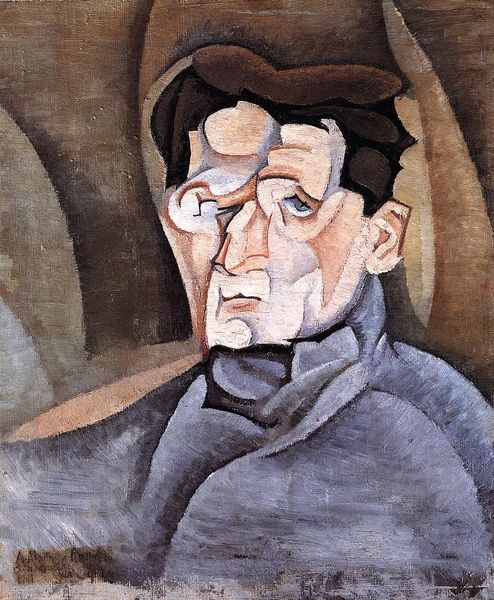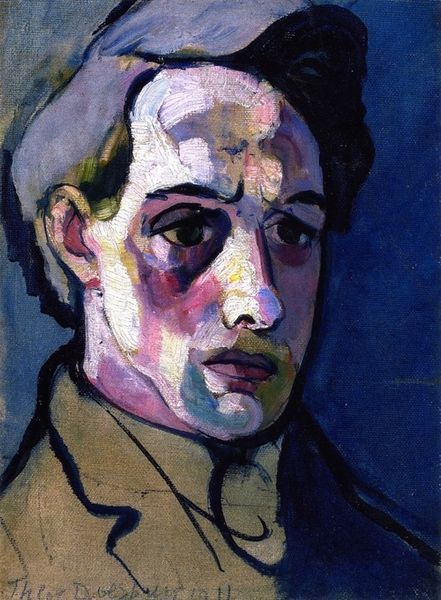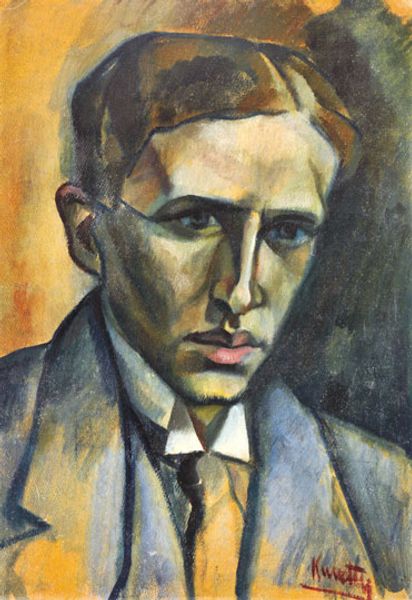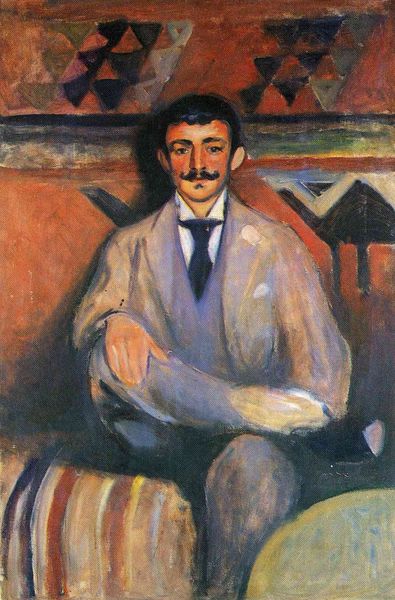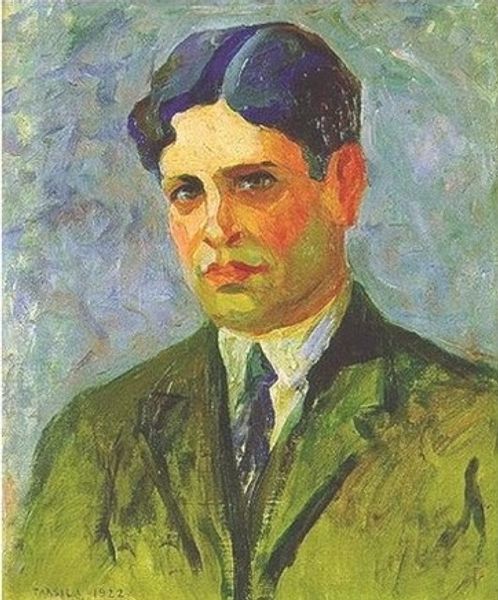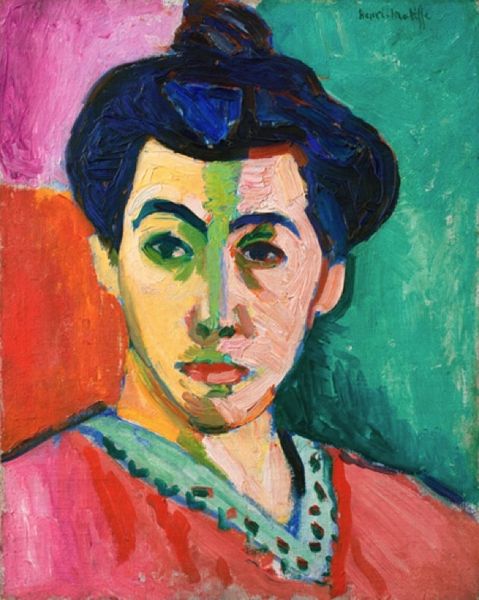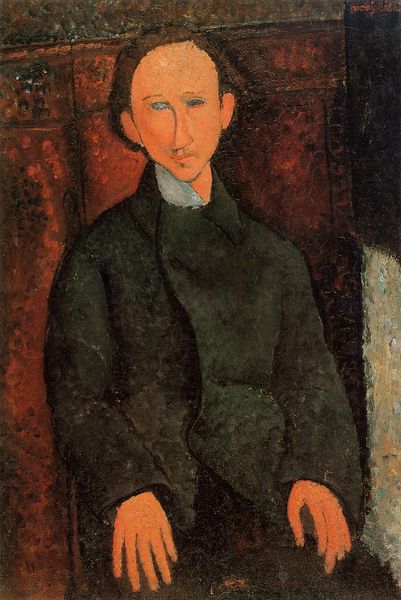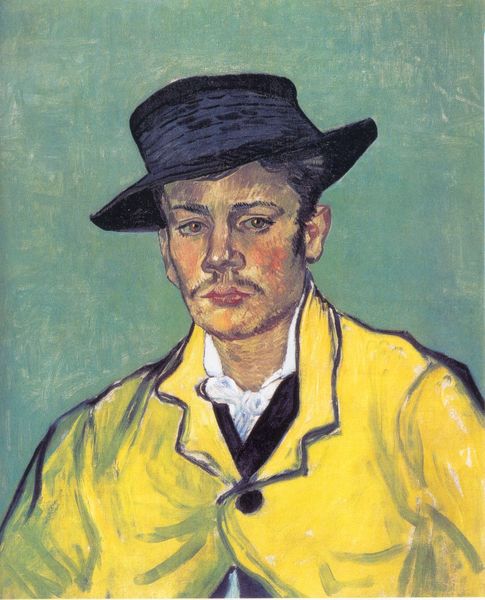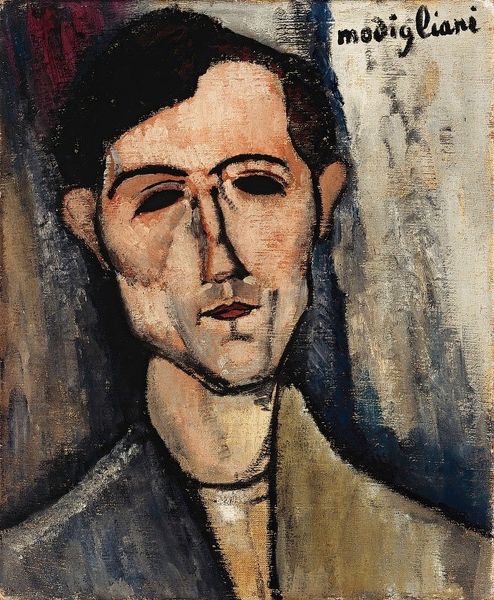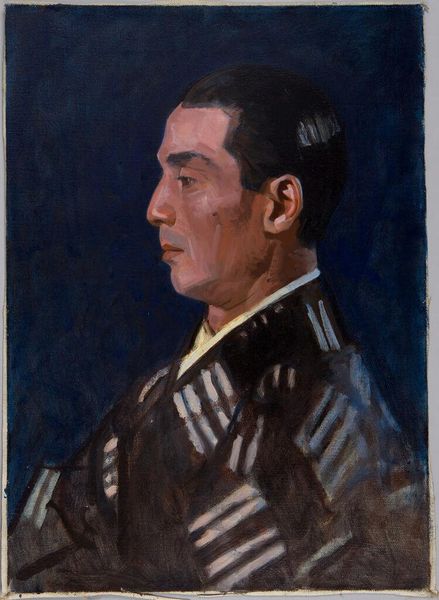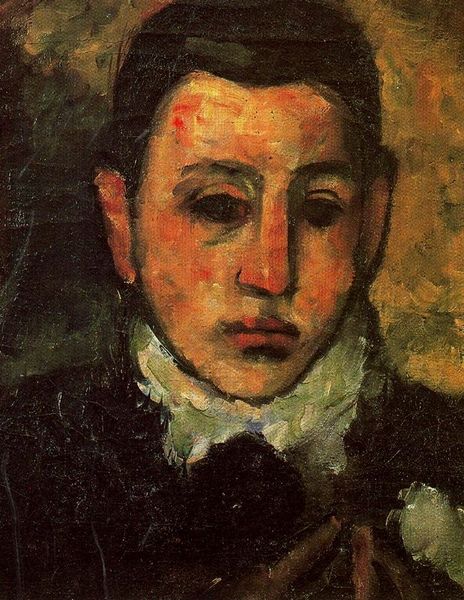
oil-paint
#
portrait
#
abstract painting
#
self-portrait
#
oil-paint
#
oil painting
#
expressionism
#
naive art
Copyright: Public domain
Editor: This is Aristarkh Lentulov's "Self-Portrait," painted in 1913. The bright colours are quite striking. How would you interpret this work in its historical context? Curator: Lentulov's portrait, painted just before World War I, reflects a broader crisis in representation. Consider how the Russian avant-garde, including Lentulov, was grappling with a world rapidly changing. He moved away from traditional academic styles, participating in exhibitions that were criticized for vulgarity and that rejected traditional portraiture conventions. How does this defiance inform your understanding? Editor: I suppose it’s pushing back against established norms, wanting a fresh start in art like other movements we've studied, like Italian Futurism. I'm getting a sense that this is more than just depicting what's visible; there is emotion or expression that goes deeper. Curator: Exactly! Examine how his subjective experiences may also tie into wider societal upheavals. This portrait appeared in exhibitions where it inevitably took a place. Consider it placed along with other artworks deemed equally "vulgar" by art critics. Its meaning shifts as it takes its place within an art market and exhibitions. The brushstrokes aren't necessarily attempting photographic precision. Instead, they prioritize emotive power. Editor: That's fascinating – so it's not just about personal expression, but a statement within the artistic community. How did viewers at the time react? Curator: With mixed reviews. Some found it jarring; others saw a bold step toward a new artistic vocabulary. There are those whose perspective on what belongs in art shifts because they are prompted by works such as these to do so. In any case, "Self-Portrait" became a part of a wider conversation about art's function in representing societal and political transition. What new perspectives does that give you? Editor: This really brings home how art is both individual and deeply social – that an artwork becomes something quite different when considered within museums or galleries! Curator: Precisely. Examining those conditions transforms our appreciation entirely!
Comments
No comments
Be the first to comment and join the conversation on the ultimate creative platform.


